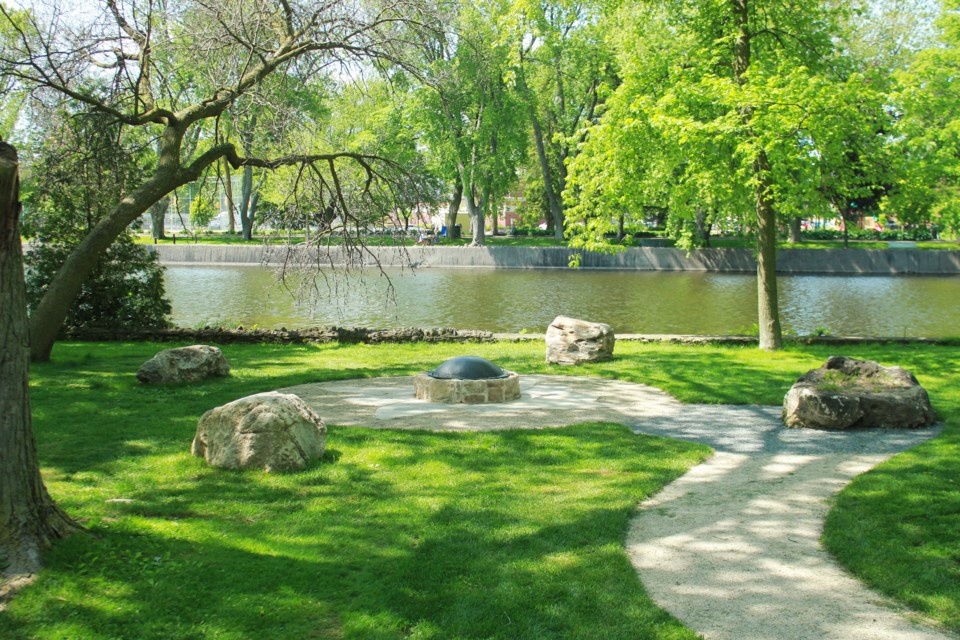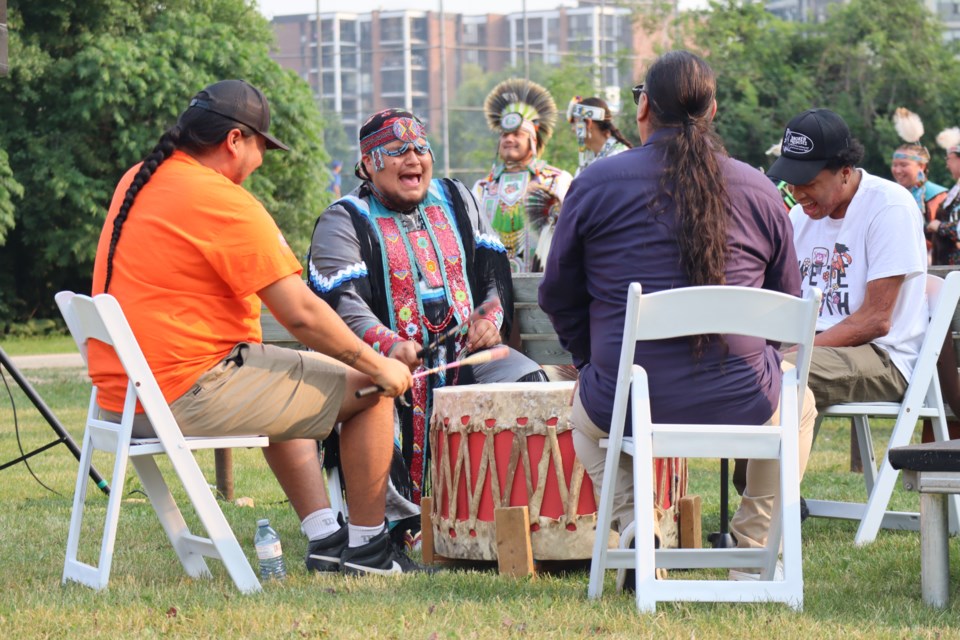Members of the Indigenous community are expressing their need for an indoor space like a Friendship Centre to get together privately and safely.
“For so many years, it was illegal for us to get together, to engage in our culture, to celebrate and to have ceremony. That was taken away from us, and it’s really important that we get back to those practices,” said Amber Holmes (Naawayaa).
“Unfortunately, we don’t have anywhere to do that safely.”
Holmes was one of about 30 community members who attended a city meeting earlier this month, led by Indigenous consultant Steven Vanloffeld.
The meeting, and others like it, are being held by the city to collect feedback from the Indigenous community members for the Indigenous Relations Framework, “focused on providing guidance to the city on how we can better learn, understand, prioritize and adopt actions that advance reconciliation,” said Kimberly Krawcyzk, city manager of policy and intergovernmental relations in an email.
“Engagement activities or discussions like (this) are critical to building relationships and identifying opportunities and perspectives to be incorporated into the IRF where possible,” she said. “We as a city have much to learn, and we value the collaboration and perspectives that are being shared with us by those who identify as Indigenous.”
One of the most pervasive concerns shared was the need for a physical space, like a Friendship Centre – something community members have been advocating for for years.
“How can we bring back the languages, cultures, spiritual traditions, and heal from colonial trauma (and) lateral violence, if we don’t have a space or resources to do that in Guelph?” said Jessie Buchanan.
“So much healing work is about identity and belonging. A healing lodge and resource space is one of the main things that people are asking for. We need Indigenous folks to feel represented, and that they belong here,” she said.
A healing or Friendship Centre could connect everyone and offer cultural resources for the community in terms of healing, workshops and ceremony.
The only place the community really gathers right now, besides occasionally meeting at the Shelldale Family Gateway and EarlyON centre, is outside in city parks. The Sacred Fire site on Martin Avenue is in Royal City Park, and has a lot of foot traffic. At times, other events will be going on right next to a ceremony.
 “We don’t have the quiet or the peace or the sacredness that the moment requires,” said Holmes.
“We don’t have the quiet or the peace or the sacredness that the moment requires,” said Holmes.
And the experiences they do have are not always positive.
For instance, once Holmes was in ceremony in a park for a community member who had died, and someone who didn’t understand what they were doing started heckling them.
“When we’re in public spaces and there’s people walking by, we’re vulnerable. Sometimes we’re disrespected. Sometimes we don’t feel safe. Sometimes we feel judged… like we’re on display,” they said. “City parks are not necessarily safe places for us for those reasons.
“We need spaces where we can feel safe and not judged. In other communities, they have those spaces that are carved out. There’s an understanding that the need is there.”
Anishnabeg Outreach does run its Spirit Bundles program out of Trinity United Church, but not everyone is comfortable going into a church.
The lack of space also makes it difficult for people to connect – the community is spread out, and there is no organization or place to keep them connected and informed.
“It’s weird because you look at places like Kitchener and Waterloo; they have multiple Indigenous agencies, places that would be considered safe for people to gather. Here in Guelph, we don’t have that,” Mike “O’Dah ziibing” Ashkewe said.
For instance, K-W has White Owl Native Ancestry Association, K-W Urban Native Wigwam Project, Anishnabeg Outreach, Healing of the Seven Generations and the Willow River Centre, among others. The nearest Friendship Centres are in Brantford and Hamilton.
Peter Howlett also pointed to Anishnawbe Health Toronto.
“It’s almost the size of city hall. But there’s no space in Guelph for Native people,” he said, adding that there hasn’t been a sufficient gathering space since he moved here 20 years ago.
People can’t always travel to Kitchener, Hamilton, Toronto and beyond to access these services, either.
“We should have things here for us, as a community,” said Evaristo Ramos. “There’s an extreme sense of wanting to have a place where people can go to physically… to have learnings, do ceremony without being interrupted, or the fear of being heckled.”
Ideally, Howlett said they could apply programs that help with funding, like the Friendship Centre Program that provides core funding to centres to maintain a stable base of operations, covering day-to-day costs like rent, staffing, utilities and more.
“If someone at city hall could help us fill out the applications for the funding, then we could get a space,” he said.
If the funding comes through, they would just need the building.
Holmes said they thought it would be a sign of good faith for the city to propose three possible sites for the space within the next year or so, which the Indigenous community could then discuss and decide on among themselves through traditional consensus.
It would allow the chance for the community to “explore leadership as a community, to engage in traditional consensus making, and choose a place that we felt spoke to us a community.”
It would also be “a sign of good faith that we’re not wasting our time going into consultation over and over again, when at the end of the day, we keep saying we need this space, and they’re not actually going to do anything,” Holmes said.
“This needed to happen 30 years ago. But the fact is that right now, the city has invested in having this conversation, they’ve hired an Indigenous consulting agency to do this work. In my opinion, it seems like… it is an attempt to do meaningful engagement with the Indigenous community.”
Holmes doesn’t want to see that afford squandered by misguided solutions. For instance, offering the Guelph Armoury as a community space.
“It’s a military building. How does that make our community safe?”
The building needs to be accessible, and not just for people with mobility issues. For some, it’s also important to be near the water because of its role in ceremonies.
“We need greater consideration … culturally-rooted and land-based,” Holmes said. “If the city’s really committed to reconciliation and also unifying our community, we can’t do that without the space.”
Krawcyzk said the city is supportive of the local Indigenous community “reaching out to the National Association of Friendship Centres to explore the requirements for establishing one.”
But beyond that, she said it’s outside “the scope of (our) mandate to lead the development.”
In the meantime she said the city will “continue to engage participants through the IRF process to determine how the city can support Indigenous peoples in securing space for community building and healing.”
Holmes said they felt this meeting was the first time a lot of their voices were heard by the city, “but it remains to be seen whether or not that effort is genuine.”
The IRF is set to be presented to council in September, and the plan is to implement the feedback not long after.
Given that, Ashkewe believes securing a space is doable within one year’s time or less.
“If we’re going to do truth and reconciliation, it’s time to stop talking about it – it’s time to actually do it,” Ashkewe said.
